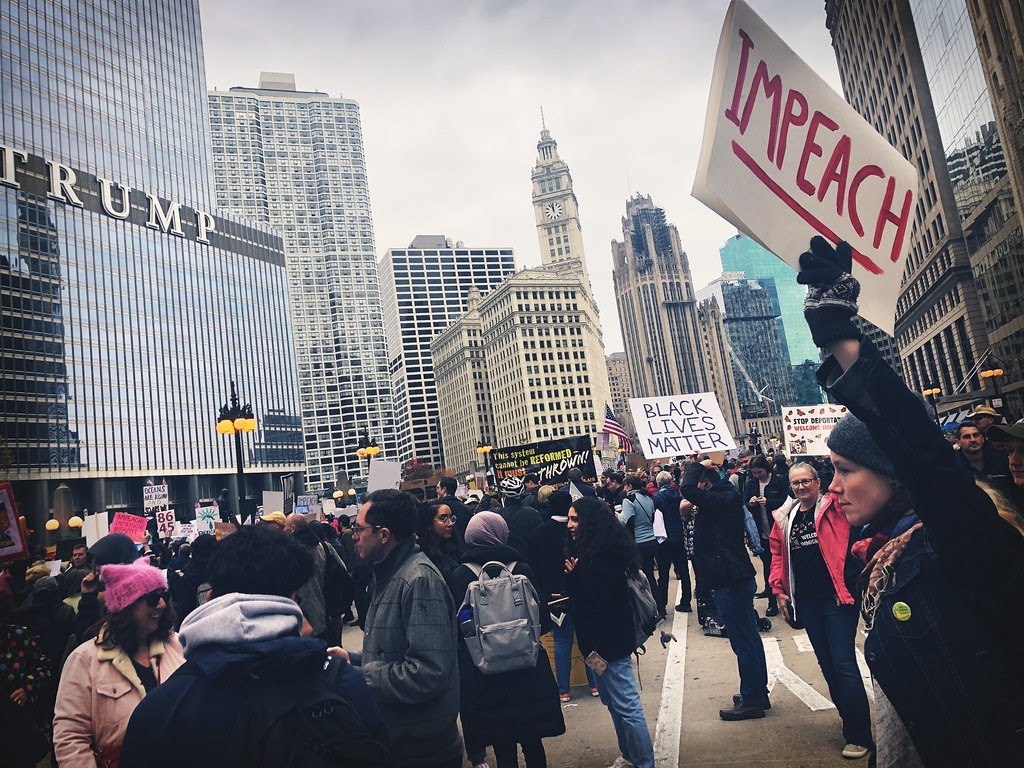There is very little a government can do to frustrate and anger its population more than shut down. Citizens pay taxes and abide by laws—even those with which they don’t agree—and in return, the government abdicates much of its responsibility and ceases to function over issues that do not necessitate such drastic measures.[1]
Indeed, this course—or rather, lack—of action is nothing new. In total, there have been 21 shutdowns since 1976, under both Democratic and Republican presidents.[2] Yet, the most recent shutdown is arguably unlike any of its predecessors. The protracted nature of the most recent shutdown, combined with the Republican hold on power and frivolous politics resulting in great economic damage, renders it an indelible black mark unlike any has been on previous presidencies.
The most recent government shutdown was Donald Trump’s third of 2018, and at 35 days, the longest ever in history. It surpasses the second longest shutdown, under Clinton in 1995, by two whole weeks. Trump’s most recent shutdown was more than twice as long as the median shutdown length and accordingly resulted in significant economic damages.[3]
In addition to the protracted nature of the shutdown, another damming aspect of Trump’s shutdown is who held political power in Washington: Republicans held the presidency and both chambers of Congress.[4] Due to filibuster rules, Republican power was not completely unilateral, but with majorities in the House and Senate, they controlled which bills could be heard, and controlling the presidency, any bill that passed would need veto-proof majority in the Senate. Senate Democrats could not introduce their own bills and needed to resist political pressure and maintain an unwavering caucus to block Republican legislation from going through the Senate.[5] If blame can be assigned for this shutdown, then the Republicans are inexorably the more culpable, as they were ultimately the only party that could put an end to the shutdown.
In negotiations broadcast live on December 11th, between the President and then House Minority Leader Nancy Pelosi and Senate Minority Leader Chuck Schumer, President Trump even offered to take ownership of the shutdown, saying he was “proud to shut down the government” in order to get his wall.[6] Thus he made clear his opposition to the other, more diplomatic option available to him: negotiating for wall funding only once a spending bill had been passed, a strategy that would have prevented thousands of government employees and contractors from going without pay.
The particular issue that sparked the political gridlock further serves to cement the shutdown as a black mark on Trump’s presidency. As a shutdown causes major economic damage, the issues over which a government is shut down should be of commensurate importance to the damage caused to the population.[7] Trump’s wall, with a disapproval rating of over 60%, miserably failed to meet that mark.[8] In contrast, the previous longest shutdown happened over a comparatively reasonable issue: Clinton was fighting with then House Speaker Newt Gingrich and a Republican-controlled Congress over Medicare and Medicaid budget cuts—healthcare issues that have routinely polled as some of the most important issues for voters.[9] During that shutdown, Gingrich and the Republicans eventually capitulated to Clinton after facing public pressure over their unpopular cuts.[10]
Each day of a shutdown causes grave economic harm, and the longer a shutdown goes on, the more lasting the damage. According to the nonpartisan Congressional Budget Office, Trump’s shutdown over the wall resulted in $11 billion in economic losses—or nearly twice as much as he had requested for the wall itself.[11] Many government employees and contractors, particularly single-parent families or those who require government assistance, were forced to take short-term loans with very high interest rates just to feed their families or avoid missing their mortgage or car payments.[12] While government workers, such as TSA agents, received back pay for hours worked during the shutdown, recouping at least some of their economic losses, thousands of government contractors did not receive any back pay.[13] The 35-day shutdown was two weeks longer than the previous longest under Clinton, causing an extra cycle of missed paychecks and proving more economically disastrous than any of the previous shutdowns.
From a macroeconomic perspective, the shutdown reduced the country’s GDP by $3 billion for the final quarter of 2018 and by another $8 billion for 2019.[14] Even worse, the shutdown came at a time when the Congressional Budget Office predicts an economic slow down, as the boom that began during Obama’s second term begins to wane.[15] Additionally, as the new tax law comes into effect, government debt will also balloon, likely reaching the highest levels since the end of World War II.[16] Although there is never a good time, this was clearly a particularly bad time to have a government shutdown.
Looking back, there never should have been a shutdown in the first place. Only eight shutdowns since the Ford Administration started the same way as Trump’s—with both chambers of Congress and the presidency controlled by the same political party. Three of those eight have been during the Trump Administration, and the other five were under Carter.[17]
While the five shutdowns under Carter naturally draw attention, they were not as attributable to the president as it may initially seem. Carter’s shutdowns were primarily traced to congressional fights over federal funding for abortions.[18] Federal workers were not furloughed, and the government did not close, as there was only a technical funding gap, meaning the government did not fully shut down.[19] Shutdowns like the one in 2018-19, in which entire sections of the government were closed, did not start until the government began enforcing the Antideficiency Act, which happened after the Carter administration.[20] The Carter shutdowns of the late 1970’s and early 1980’s are largely incomparable to more recent shutdowns, including Trump’s, in that they simply did not result in massive furloughs.[21]
Early in the Trump Shutdown, the Senate passed a spending bill that would have kept the government open. The House modified the bill to include wall funding which was not passed when sent back to the Senate, something then Speaker of the House, Paul Ryan, surely knew would happen.[22]
At first, President Trump said he would sign a bill that opened the government without wall funding, but he later changed his mind, insisting that he receive the funds to carry out his most significant campaign promise. Many saw this shift as a capitulation to right-wing commentators, such as Ann Coulter, who had aggressively attacked him in the media when he was willing to negotiate, calling him “gutless” and declaring his leadership “a joke presidency.”[23]
Through a combination of intense public pressure, public disgust for the Republican-led government closure, and Democratic stubbornness and unity, Congress was able to pass a bill that would temporarily open the government for three weeks, thus putting an end to what should be remembered as the most shameful shutdown in U.S. history.[24][25] The magnitude of the shutdown—both in terms of length and economic damage—as well as its unpopular political origin and uniform Republican governance makes for a lasting black mark on Donald Trump’s presidency, permanently tarnishing the legacy of the past two years of the administration and the GOP Congress.
[1] Agiesta, Jennifer, and Grace Sparks. “Polls Agree: Americans Don’t like Shutdown and They Blame Trump.” CNN. January 18, 2019. Accessed February 03, 2019. https://www.cnn.com/2019/01/18/politics/polling-roundup-shutdown/index.html.
[2] Frazee, Gretchen, and Lisa Desjardins. “How the Government Shutdown Compared to Every Other since 1976.” PBS. Last updated January 25, 2019. Accessed February 03, 2019. https://www.pbs.org/newshour/politics/every-government-shutdown-from-1976-to-now.
[3] Ibid.
[4] Hayes, Christal. “Government Shutdowns Are Rare When One Party Controls White House, Congress. President Trump Is on His Third.” USA Today. December 23, 2018. Accessed March 07, 2019. https://www.usatoday.com/story/news/politics/2018/12/22/government-shutdowns-rare-except-under-president-donald-trump/2396942002/.
[5] Frazee, Gretchen and Lisa Desjardins. “How the Government Shutdown Compared to Every Other since 1976.”
[6] “‘I Am Proud to Shut down the Government’, Trump Tells Schumer – Video.” The Guardian. December 11, 2018. Accessed February 04, 2019. https://www.theguardian.com/us-news/video/2018/dec/11/donald-trump-government-shut-down-chuck-schumer-white-house-video.
[7] Zaveri, Mihir. “Shutdowns Are ‘All Games of Chicken.’ Here’s How They’ve Evolved.” The New York Times. December 23, 2018. Accessed February 04, 2019. https://www.nytimes.com/2018/12/23/us/government-shutdown-history.html.
[8] Cohn, Nate. “The Wall Is Not Popular. (And Neither Is Trump.).” The New York Times. January 12, 2019. Accessed February 14, 2019. https://www.nytimes.com/2019/01/12/upshot/trump-border-wall-polls.html.
[9] Pearl, Robert, M.D. “Healthcare Is The No. 1 Issue For Voters; A New Poll Reveals Which Healthcare Issue Matters Most.” Forbes. August 13, 2018. Accessed February 14, 2019. https://www.forbes.com/sites/robertpearl/2018/08/13/midterms/#19ac89473667.
[10] Davidson, Joe. “Lasting Damage Remains from Trump’s Shutdown Folly.” The Washington Post. January 28, 2019. Accessed February 09, 2019. https://www.washingtonpost.com/politics/2019/01/28/lasting-damage-remains-trumps-shutdown-folly/?utm_term=.5f18ea83d762.
[11] Cohn, Nate. “The Wall Is Not Popular. (And Neither Is Trump.).”
[12] Rappeport, Alan, and Binyamin Appelbaum. “Government Shutdown Cost U.S. Economy $11 Billion, C.B.O. Says.” The New York Times. January 28, 2019. Accessed February 10, 2019. https://www.nytimes.com/2019/01/28/us/politics/shutdown-cost-us-economy-11-billion-cbo-says.html.
[13] Davidson, Joe. “Lasting Damage Remains from Trump’s Shutdown Folly.”
[14] United States Congress. Congressional Budget Office. The Budget and Economic Outlook: 2019 to 2029. January 28, 2019. Accessed February 10, 2019. https://www.cbo.gov/publication/54918.
[15] Ibid.
[16] Rappeport, Alan, and Binyamin Appelbaum. “Government Shutdown Cost U.S. Economy $11 Billion, C.B.O. Says.”
[17] Struyk, Ryan, and Joyce Tseng. “The History of Government Shutdowns in 1 Chart.” CNN. January 13, 2018. Accessed February 03, 2019. https://www.cnn.com/2018/01/13/politics/us-government-shutdowns-budget-chart/index.html.
[18] “Before 1980 the Federal Government Did Not Shut down.” The Economist. January 10, 2019. Accessed February 10, 2019. https://www.economist.com/united-states/2019/01/10/before-1980-the-federal-government-did-not-shut-down.
[19] Frazee, Gretchen, and Lisa Desjardins. “How the Government Shutdown Compared to Every Other since 1976.”
[20] Puckett, Jason. “Verify: Here’s a Timeline of Previous Government Shutdowns in the U.S.” KGW. January 03, 2019. Accessed February 13, 2019. https://www.kgw.com/article/news/verify-heres-a-timeline-of-previous-government-shutdowns-in-the-us/507-626039750.
[21] Frazee, Gretchen, and Lisa Desjardins. “How the Government Shutdown Compared to Every Other since 1976.”
[22] Hayes, Christal. “Government Shutdowns Are Rare When One Party Controls White House, Congress. President Trump Is on His Third.”
[23] Collins, Kaitlan. “Trump Sensitive to Criticism about So-far Failed Border Wall Promise.” CNN. December 19, 2018. Accessed February 10, 2019. https://www.cnn.com/2018/12/19/politics/donald-trump-border-wall-funding/.
[24] Agiesta, Jennifer. “CNN Poll: Trump Bears Most Blame for Shutdown.” CNN. January 14, 2019. Accessed February 10, 2019. https://www.cnn.com/2019/01/13/politics/cnn-poll-shutdown-trump/index.html.
[25] Fandos, Nicholas, Sheryl Gay Stolberg, and Peter Baker. “Trump Signs Bill Reopening Government for 3 Weeks in Surprise Retreat From Wall.” The New York Times. January 25, 2019. Accessed February 10, 2019. https://www.nytimes.com/2019/01/25/us/politics/trump-shutdown-deal.html.



